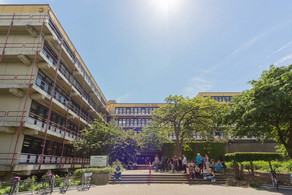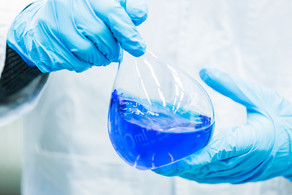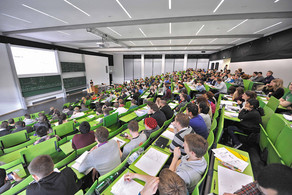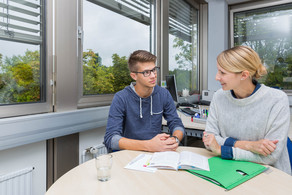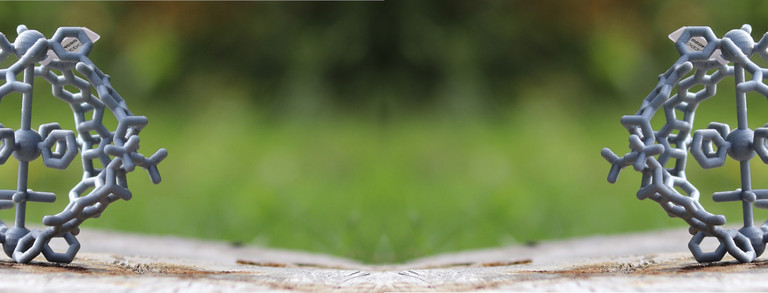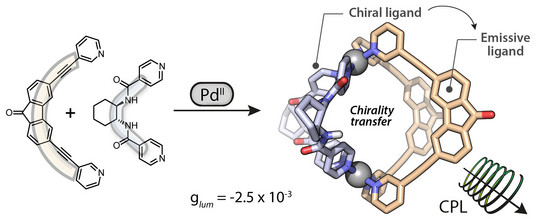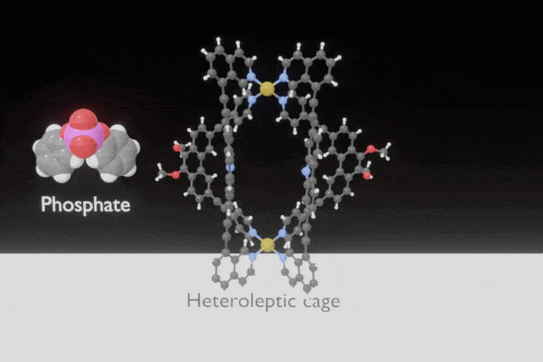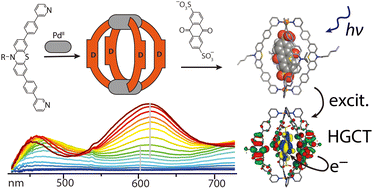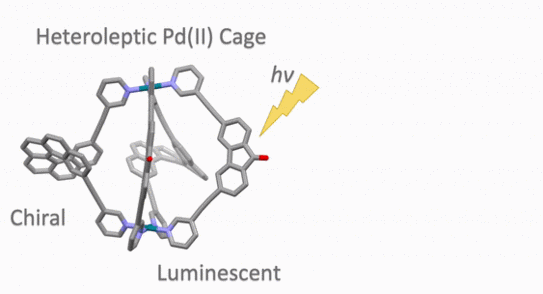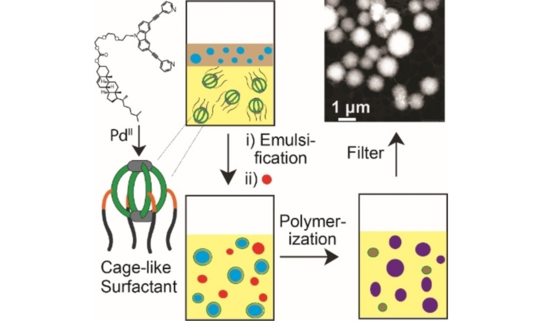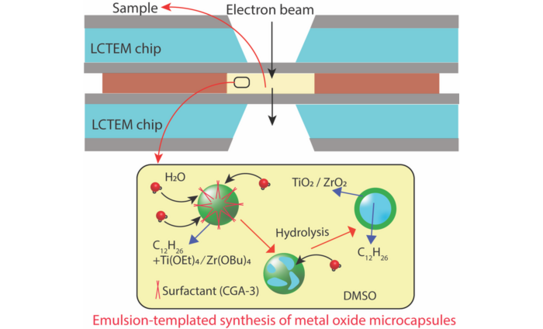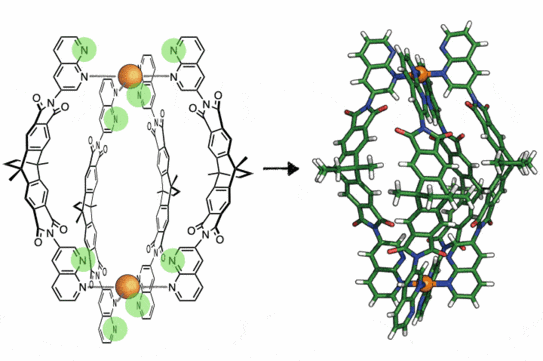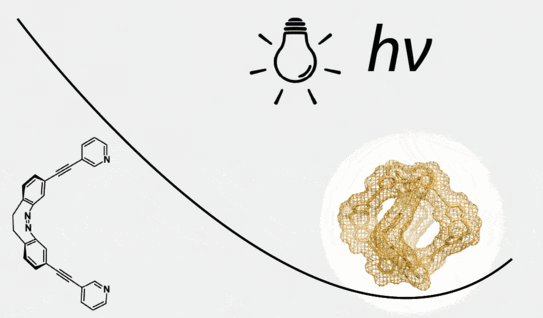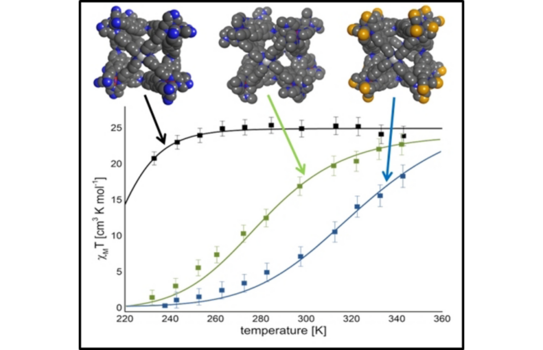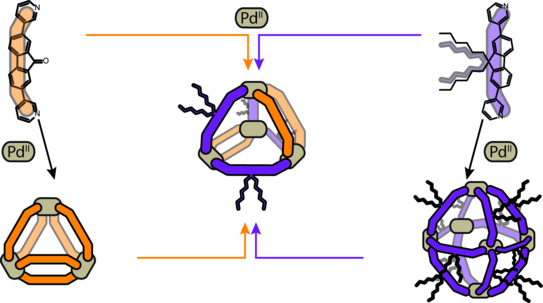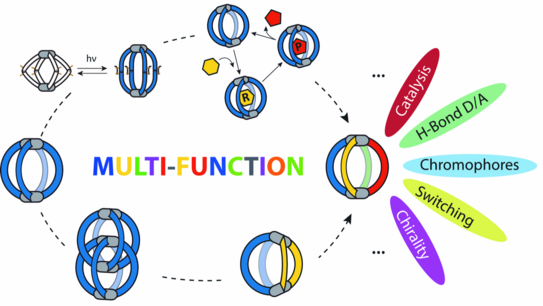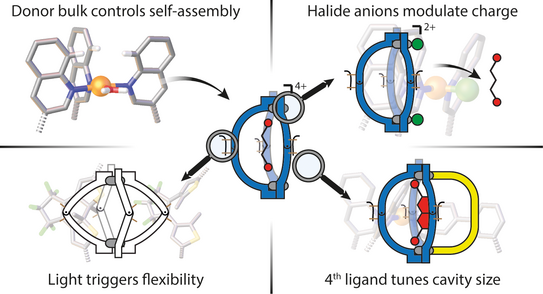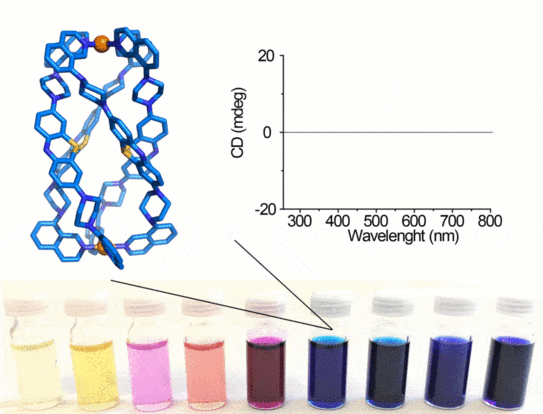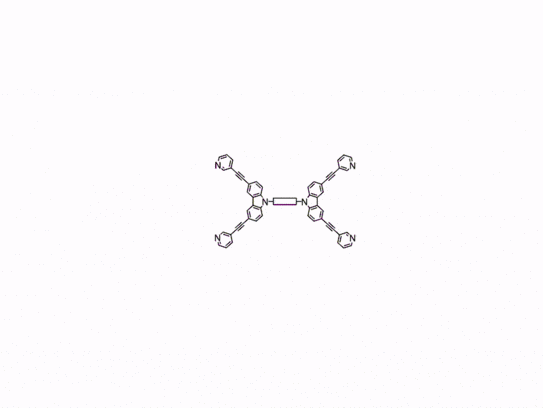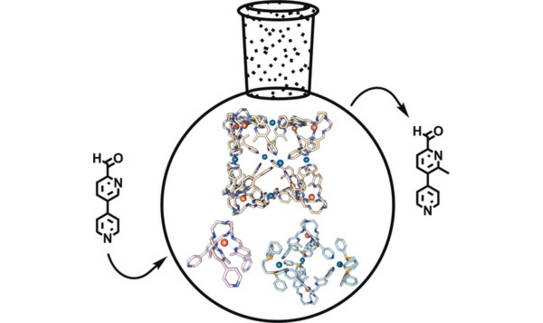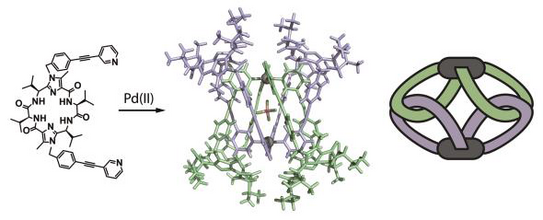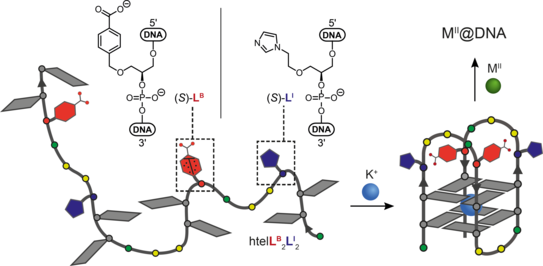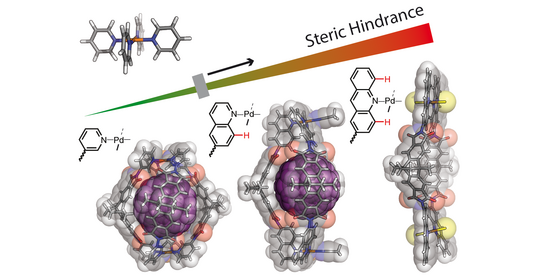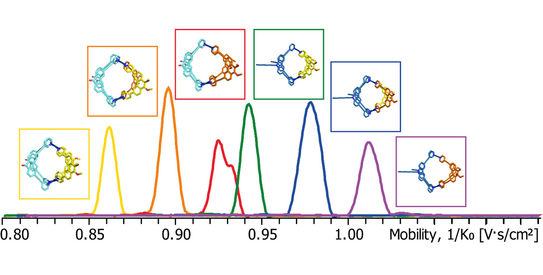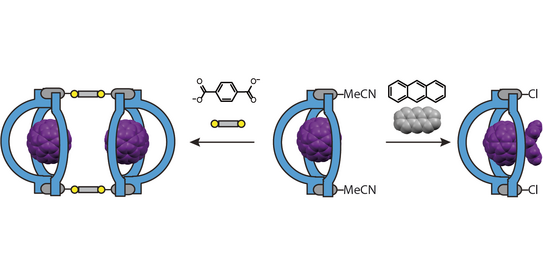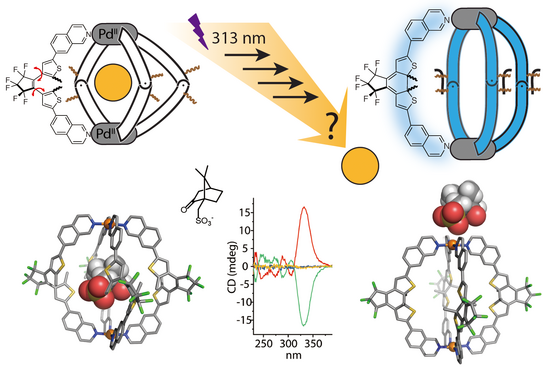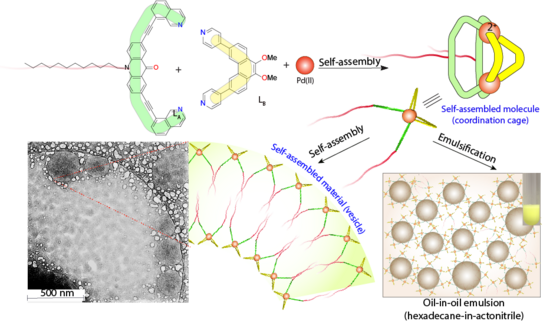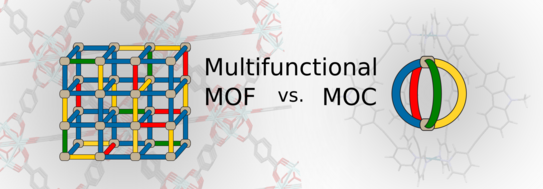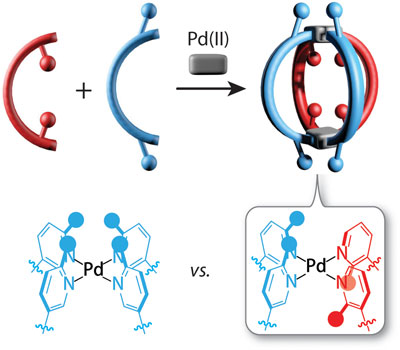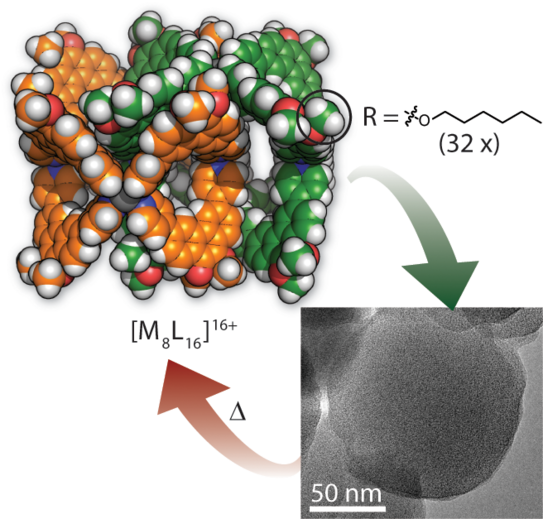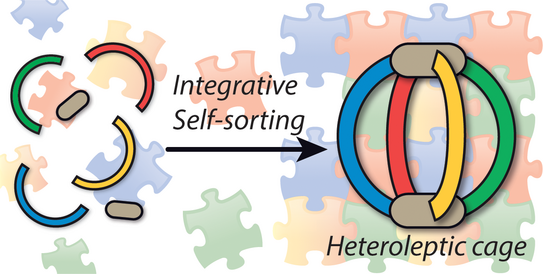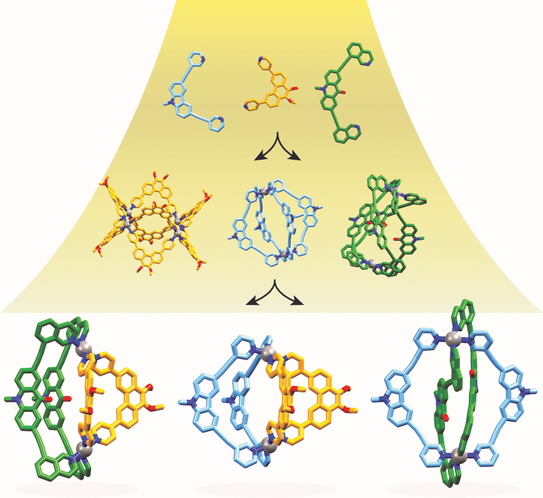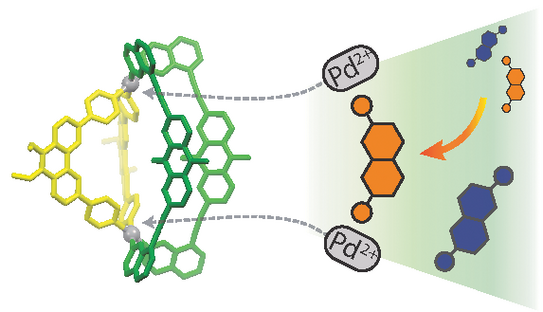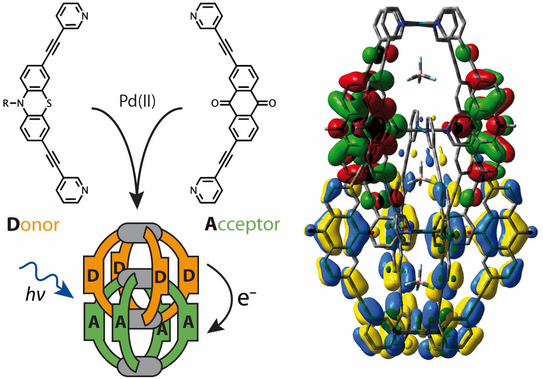ERC Consolidator Grant RAMSES
Reactivity and Assembly of Multifunctional, Stimuli-responsive Encapsulation Structures
Objectives
In biochemical systems, combinations of specialized molecular entities are precisely arranged in space to give highly complex architectures. Sophisticated functionality, such as the selective chemical transformation of substrates inside enzymes, emerges from the interplay of the individual components that are often grouped around a nanoscopic cavity. Furthermore, control mechanisms based on the cooperative binding of signal substances may regulate the enzyme’s action.
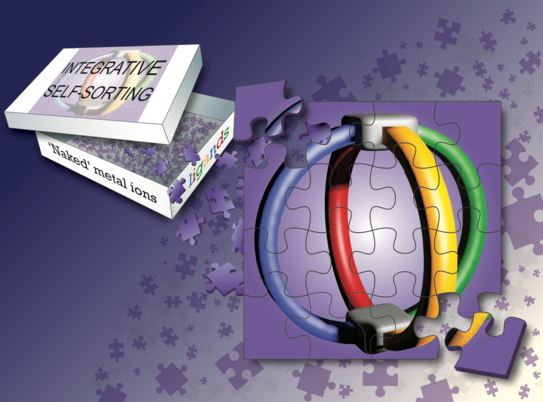
Since the advent of supramolecular chemistry, scientists construct artificial systems with ever increasing complexity and functionality that promise to serve as the basis for future developments in bottom-up nanotechnology with applications in medicine (e.g. targeted drug delivery), smart diagnostics, catalysis, material science, molecular photonics, electronics and data processing.
Metal-mediated self-assembly is a mature technique to construct such discrete, nanosized objects. So far, however, the implementation of one type of organic ligand at a time is dominating the reported, highly symmetric structures, while the tailored integration of a set of different ligands requires sophisticated approaches to avoid narcissistic separation or formation of statistical libraries.
Nature demonstrates that the key to the most sophisticated systems lies in multi-functionalized structures. To achieve this level of complexity with artificial systems, we develop multiple strategies for the synthesis of heteroleptic coordination architectures. As a result, different functional elements can be precisely arranged inside or outside the cavity and their interplay will be studied. Combined with our recent achievements in host-guest switching, we aim at adjustable receptors, controllable molecular reaction chambers and multifunctional photo/redox systems.
Further information
ERC RAMSES Publications
Modular Enhancement of Circularly Polarized Luminescence in Pd2A2B2 heteroleptic cages
J. Tessarolo, E. Benchimol, A. Jouaiti, M. Wais Hosseini, G. H. Clever, Chem. Commun. 2023, DOI: 10.1039/D3CC00262D
"Endohedrally Functionalized Heteroleptic Coordination Cages for Phosphate Ester Binding"
A. Platzek, S. Juber, C. Yurtseven, S. Hasegawa, L. Schneider, C. Drechsler, K. E. Ebbert, R. Rudolf, Q.-Q. Yan, J. J. Holstein, L. V. Schäfer, G. H. Clever, Angew. Chem. Int. Ed. 2022, DOI: 10.1002/anie.202209305.
(Hot Paper)
"Photoinduced Host-to-Guest Electron Transfer in a Self-Assembled Coordination Cage"
S. Ganta, J.-H. Borter, C. Drechsler, J. J. Holstein, D. Schwarzer, G. H. Clever, Org. Chem. Front. 2022, 9, 5485-5493.
Guest-modulated Circularly Polarized Luminescence by Ligand-to-Ligand Chirality Transfer in Heteroleptic Pd(II) Coordination Cages
K. Wu, J. Tessarolo, A. Baksi, G. H. Clever, Angew. Chem. Int. Ed. 2022, DOI: 10.1002/anie.202205725.
(Hot Paper, Front Cover)
"Nonaqueous Emulsion Polycondensation enabled by a Self-Assembled Cage-like Surfactant"
S. Ganta, C. Drechsler, Y.-T. Chen, G. H. Clever, Chem. Eur. J. 2022, 28, e202104228.
"Coordination cage-based emulsifiers: templated formation of metal oxide microcapsules monitored by in situ LC-TEM"
S. Saha, Y.-T. Chen, S. Ganta, M. Gilles, B. Holzapfel, P. Lill, H. Rehage, C. Gatsogiannis, G. H. Clever, Chem. Eur. J. 2021, accepted.
"Cooperativity of steric bulk and H-bonding in coordination sphere engineering: heteroleptic PdII cages and bowls by design"
B. Chen, J. J. Holstein, A. Platzek, L. Schneider, K. Wu, G. H. Clever, Chem. Sci. 2022, 13, 1829 - 1834.
"Light-powered Dissipative Assembly of Diazocine Coordination Cages"
H. Lee, J. Tessarolo, D. Langbehn, A. Baksi, R. Herges, G. H. Clever, J. Am. Chem. Soc. 2022, 144, DOI: 10.1021/jacs.1c12011.
Official faculty news announcement with more information (German only)
"A Family of Heterobimetallic Cubes Shows Spin-Crossover Behaviour Near Room Temperature"
M. Hardy, J. Tessarolo, J. J. Holstein, N. Struch, N. Wagner, R. Weisbarth, M. Engeser, J. Beck, S. Horiuchi, G. H. Clever, A. Lützen, Angew. Chem. Int. Ed. 2021, 60, 22562-22569.
"Integrative Assembly of Heteroleptic Tetrahedra Controlled by Backbone Steric Bulk"
J. Tessarolo, H. Lee, E. Sakuda, K. Umakoshi, G. H. Clever, J. Am. Chem. Soc. 2021, 143, 6339.
"Increasing Structural and Functional Complexity in Self-Assembled Coordination Cages"
S. Pullen, J. Tessarolo, G. H. Clever, Chem. Sci. 2021, 12, 7269-7293.
"Multi-Stimuli Control over Assembly and Guest Binding in Metallo- Supramolecular Hosts based on DTE Photoswitches"
R. Li, J. Tessarolo, H. Lee, G. H. Clever, J. Am. Chem. Soc. 2021, 143, 3865.
"Coal-Tar Dye-based Coordination Cages and Helicates"
I. Regeni, B. Chen, M. Frank, A. Baksi, J. J. Holstein, G. H. Clever, Angew. Chem. Int. Ed. 2021, 60, 5673.
(Highlighted in a press release by the Cluster of Excellence RESOLV)
"Backbone-Bridging Promotes Diversity in Heteroleptic Cages"
K. Wu, B. Zhang, C. Drechsler, J. J. Holstein, G. H. Clever, Angew. Chem. Int. Ed. 2021, 60, 6403.
"Dynamic Complex-to-Complex Transformations of Heterobimetallic Systems Influence the Cage Structure or Spin State of Iron(II) Ions"
M. Hardy, N. Struch, J. J. Holstein, G. Schnakenburg, N. Wagner, M. Engeser, J. Beck, G. H. Clever, A. Lützen, Angew. Chem. Int. Ed. 2020, 59, 3195.
"A New Mechanically-Interlocked [Pd2L4] Cage Motif by Dimerization of two Peptide-based Lemniscates"
T. R. Schulte, J. J. Holstein, L. Schneider, A. Adam, G. Haberhauer, G. H. Clever, Angew. Chem. Int. Ed. 2020, 59, 22489.
(Hot Paper, Inside Cover)
(In collaboration with Prof. Gebhard Haberhauer from Duisburg-Essen University)
"Heteroleptic Coordination Environments in Metal-Mediated DNA G-Quadruplexes"
P. M. Punt, L. M. Stratmann, S. Sevim, L. Knauer, C. Strohmann, G. H. Clever, Front. Chem. 2020, 8, 26.
B. Chen, S. Horiuchi, J. J. Holstein, J. Tessarolo, G. H. Clever, Chem. Eur. J. 2019, 25, 14921.
K. E. Ebbert, L. Schneider, A. Platzek, C. Drechsler, B. Chen, R. Rudolf, G. H. Clever, Dalton Trans. 2019, 48, 11070.
B. Chen, J. J. Holstein, S. Horiuchi, W. G. Hiller, G. H. Clever, J. Am. Chem. Soc. 2019, 141, 8907.
"Successive Photoswitching and Derivatization Effects in Photochromic DTE-based Coordination Cages"
R. Li, M. Han, J. Tessarolo, J. J. Holstein, J. Lübben, B. Dittrich, C. Volkmann, M. Finze, C. Jenne, G. H. Clever, ChemPhotoChem 2019, 3, 378.
"Chiral Self-Discrimination and Guest Recognition in Helicene-based Coordination Cages"
T. R. Schulte, J. J. Holstein, G. H. Clever, Angew. Chem. Int. Ed. 2019, 58, 5562.
R. Li, J. J. Holstein, W. G. Hiller, J. Andréasson, G. H. Clever, J. Am. Chem. Soc. 2019, 141, 2097.
"Rational Design of an Amphiphilic Coordination Cage-based Emulsifier"
S. Saha, B. Holzapfel, Y.-T. Chen, K. Terlinden, P. Lill, C. Gatsogiannis, H. Rehage, G. H. Clever, J. Am. Chem. Soc. 2018, 140, 17384.
S. Pullen, G. H. Clever, Acc. Chem. Res. 2018, 51, 3052.
R. Zhu, W. M. Bloch, J. J. Holstein, S. Mandal, L. V. Schäfer, G. H. Clever, Chem. Eur. J. 2018, 24, 12976.
(Hot Paper)
"Hierarchical Assembly of an Interlocked M8L16 Container"
W. M. Bloch, J. J. Holstein, B. Dittrich, W. Hiller, G. H. Clever, Angew. Chem. Int. Ed. 2018, 57, 5534.
"Integrative self-sorting of coordination cages based on 'naked' metal ions "
W. M. Bloch, G. H. Clever, Chem. Commun. 2017, 53, 8506.
"Morphological Control of Heteroleptic cis- and trans-Pd2L2L'2 Cages"
W. M. Bloch, J. J. Holstein, W. Hiller, G. H. Clever, Angew. Chem. Int. Ed. 2017, 56, 8285.
W. M. Bloch, Y. Abe, J. J. Holstein, C. M. Wandtke, B. Dittrich, G. H. Clever, J. Am. Chem. Soc. 2016, 138, 13750.
"Light-induced Charge Separation in Densely Packed Donor-Acceptor Coordination Cages"
M. Frank, J. Ahrens, I. Bejenke, M. Krick, D. Schwarzer, G. H. Clever, J. Am. Chem. Soc. 2016, 138, 8279.
Congratulations to Jennifer Ahrens (PhD student of collaboration partner Prof. Dirk Schwarzer, MPI for Biophysical Chemistry, Göttingen) for receiving a Poster Prize on the Bunsentagung 2016 for her contribution to our joint work. In addition, our work was featured on the cover of issue 5/2016 of the Bunsen Magazin.

